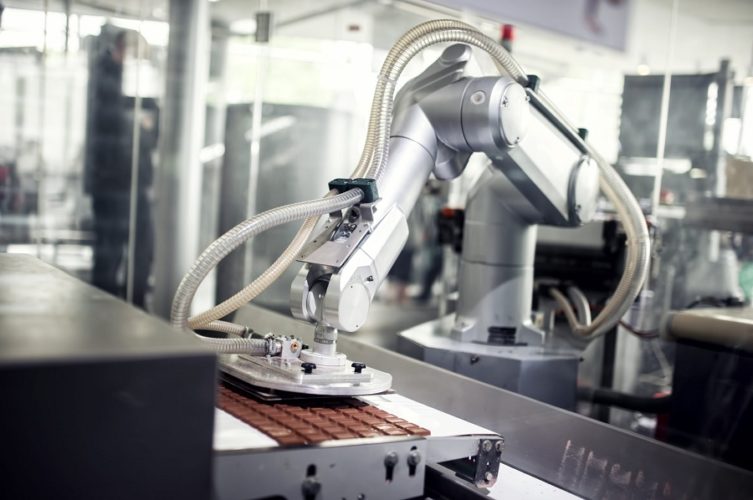Use of collaborative robots has helped to optimize productivity, reduce costs and also improve the quality of work across different industries. These robotic arms can automate high precisions task or any repetitive task with more flexibility as well as faster payback as compared to other traditional industrial robots.
The metal and machining industry
Collaborative robot arms can improve the quality and quantity of the output in metal and machinery industries. This gives metal and machinery industries using collaborative robots a competitive advantage.
Adaptation of collaborative robots for the metal and machinery industry:-
- Increased output with increased consistency and improved quality.
- Easy and fast cobot deployment. Can be used for small volume production processes as well as fast changeovers.
- Do not require dedicated or shielded workspaces.
- They are safe for the workplace.
- They are lightweight and can be deployed easily to different industry machines.
- They are easy to program with minimum or no experience requirements.
Metal and machine industrial processes are repetitive and potentially dangerous to human workers if not done right. Also, humans are unable to provide consistent, accurate results when performing repetitive tasks. Collaborative robots can perform these repetitive tasks with consistence and accuracy over a long period.
Collaborative robots in the metals and machining industries offer accurate and flexible machining automation. These robots can perform accurate repetitive tasks with a 0.004inch (0.1mm) tools and parts machining accuracy. Because of their easy to program ability, you can deploy the machine in any floor in your manufacturing plant with ease.
Food and beverage industries
Faultless processing, product quality, and handling are important processes in the food industry. Collaborative robots can work round the clock with accuracy to meet the market demand. These robotic arms can be used in different areas of food production, from food processing to packaging and distribution.
Cobots can function in temperatures ranging from zero to 50 degrees and also in low oxygen conditions which are sometimes required in the food processing industry. This would require the use of complex equipment for human workers.
Collaborative robots come in small sizes. This makes it possible for this small industrial robot to be used for different applications in the same food processing plant. This way, small business can compete in volatile markets by improving their competitiveness. The six-axis robots by universal robots are commonly used in food and beverage industries for tasks such as inspection, pick and place as well as packaging.
Adaptation of cobots for food industries:-
- Improved consistency and reduction of waste
- They are hermetically sealed to allow use in hygienic environments
- They have Specialty jackets and sleeves for specialized application needs
- Special design out casing that prevents the accumulation of debris and dust
The pharmaceutical and chemistry industry
Robotic arms can be used in the life science and chemistry industries to perform a wide range of tasks such as counting, mixing, inspection, dispensing and packaging. Collaborative robots are ideal for handling and assembling of different delicate parts used in implants, prosthetics and also medical devices. These robotic arms eliminate the possibility of contaminations and human error which improving output and offer consistent quality.
Adaptation of cobots for the pharmacy and chemistry industry:-
- Reduction of waste by improving consistency
- Hermetically sealed for safe use in a sterile environment
- Special outer casing to reduce the accumulation of dust and debris
The entertainment industry
The ability of a collaborative robot to perform non-stop repetitive and precise tasks is the reason it is becoming more and more common in the entertainment industry. The use of cobots is especially common in the film industry. Camera-wielding cobots are used to shoot movie scenes, in the same way, multiple times.
The six-axis collaborative robots can manipulate tools such as recording cameras to get high precision and speed film sequences with 360-degree wrist joint rotation and infinity end joint rotation.
Adaptation of cobots for the entertainment industry:-
- Lightweight design that offers space-saving benefit and exceptional flexibility
- Reusable programs for repetitive or recurrent task
- Easy to program with short setup time requirements
- Faster payback without the need for dedicated work cells or special setup needs
Conclusion
All these are examples of industries where collaborative robots are being implemented for improved efficiency, zero downtime and market competitive advantage.

